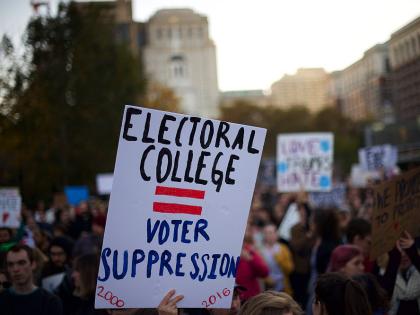Reinventing American Health Care, by Ezekiel J. Emanuel, M.D. ’85, Ph.D. ’89 (PublicAffairs, $26.99). Oncologist, writer, and policy adviser, the author, now at the University of Pennsylvania, rebuts critics of “Obamacare” in his subtitle: “How the Affordable Care Act Will Improve Our Terribly Complex, Blatantly Unjust, Outrageously Expensive, Grossly Inefficient, Error Prone System.”
An Ocean Garden, by Josie Iselin ’84 (Abrams, $17.95). Continuing her photographic explorations, Iselin, of San Francisco, who previously documented beach stones, now finds the beauty in seaweeds. After a long winter, it’s time for sand-between-the-toes; this is an eye-opening guide to what else might lodge there.
Restoring Opportunity, by Greg J. Duncan and Richard J. Murnane, Thompson professor of education and society (Harvard Education Press, $26.95 paper). The authors focus on inequality (they talk about the “fading dream” of upward mobility) and proven educational interventions and support for families that enhance outcomes for low-income children.
I Don’t Care if We Never Get Back, by Ben Blatt ’13 and Eric Brewster ’14 (Grove Press, $24). Blatt, a sports-statistics geek, and his wingman, Brewster, set out last June on an algorithmic journey to see 30 baseball games in 30 cities in 30 days, including “the good, the bad, the ugly and the Miami Marlins.” You don’t want to know what they ate.
Prisoners, Lovers, and Spies, by Kristie Macrakis, Ph.D. ’89 (Yale, $27.50). With a sure instinct for a spicy title, Macrakis, an historian of science now at Georgia Tech, delivers what is described as the first history of invisible writing, from Herodotus to al-Qaeda. How many academic books have a chapter titled “Hiding in Porn Sites” (about possibly disguising terrorist plots in X-rated photos)?
GDP: A Brief but Affectionate History, by Diane Coyle, Ph.D. ’85 (Princeton, $19.95). An accessible account of the widely used measure of economic activity—and of its limitations in an era when sustainability concerns (witness China’s fast GDP growth, and cities polluted past healthy habitation) have come to the fore. Coyle finds it a measure designed for a past economy of “physical mass production.”
The Ten Commandments: A Short History of an Ancient Text, by Michael Coogan (Yale, $25). Turning to matters spiritual, Coogan—a Divinity School lecturer on Old Testament, and the Semitic Museum’s director of publications—proves a brisk guide to the evolution and meanings of the Decalogue.
America’s Fiscal Constitution: Its Triumph and Collapse, by Bill White ’76 (PublicAffairs, $35). Bill (William H.) White, former mayor of Houston, traces the implicit agreement to balance the federal budget and eschew debt financing—until fellow Texan George W. Bush, M.B.A. ’75, did it in, cutting taxes while paying for wars and expanding medical benefits. Seeking a solution, White turns to history to find the different reasons conservatives and liberals embraced fiscal probity.
Women Still at Work and Men Still at Work, by Elizabeth F. Fideler, Ed.D. ’88 (Rowman & Littlefield, $37.50 and $36). Through interviews and surveys, the author probes professionals over 60 who are still toiling: a growing cohort, motivated by job satisfaction, diminished retirement funds, and other factors. Of course, after the Great Recession, they are luckier than those in need and without either work or prospects.
The Moses Virus, by Jack Hyland, M.B.A. ’61 (Taylor, $24.95). Professional novelists may quail at an investment banker on their turf, but Hyland, drawing on experience as chairman emeritus of the American Academy at Rome, sets his thriller in the passageway to Nero’s Golden Palace. Archaeologists, beware.
River of Light: A Conversation with Kabir, by John Morgan ’65 (University of Alaska, $19.95 paper), and Watered Colors, by Michael H. Levin, J.D. ’69 (Poetica, $16 paper). From Fairbanks and Washington, D.C., a beautifully illustrated book-length poem by Morgan (a journey down a wild river), and Levin’s debut collection, (highly colored in emotional imagery).
Through a Screen Darkly, by Martha Bayles ’70 (Yale, $30). The author, a lecturer at Boston College, finds that the United States, in deemphasizing “public diplomacy,” cedes to popular culture the role of conveying American values around the world. The result is images of violence and vulgarity—at the expense of messages about freedom and human dignity.
A Lakota War Book from the Little Bighorn, by Castle McLaughlin (Peabody Museum/Harvard, $50, paper). An album of drawings by Lakota warriors, with connections to the famous battle, interpreted and put in context by the curator of North American ethnography at the Peabody Museum of Archaeology and Ethnology. This magazine’s “Warrior Artists” (Treasure, May-June 2009, page 76) covered an exhibition of the work.









